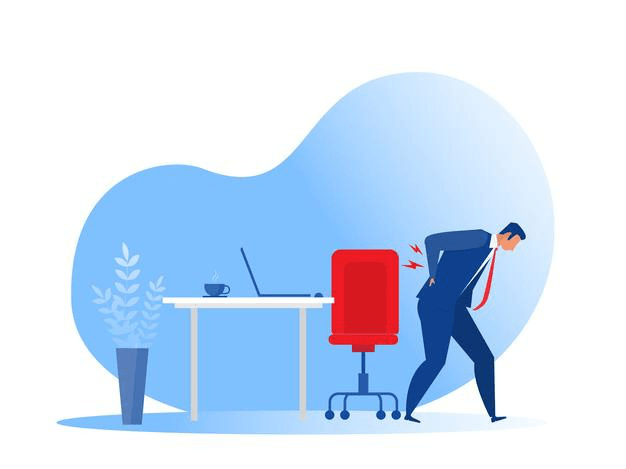Spine pain treatment online | Online Physiotherapy Clinic
- Affordable and reliable Spine pain treatment
- Video sessions with expert Physiotherapists/ PTs.
- Specialized physical therapy for Spine pain, sprain, bursitis, or stiffness
Begin Therapy
Consult online with best Physios
A New Model for Spine Pain treatment
We understand that it’s difficult for most of us to find time for traditional Spine physical therapy. Physio Mantra brings to you online Spine pain treatment, where all Spine exercises and treatments are managed through regular online check-ins & video sessions.
Expert Physical Therapists
Physio Mantra members get matched with a professional physiotherapist for one-on-one Spine pain treatment. They use interactive exercise videos available on our app to treat you.
Continuous Medical Care
Physio Mantra physiotherapists are 100% virtual and provide physical therapy to patients without any time and geographical barriers. Our technology-enabled approach helps manage physical ailments from head to toe.
Personalized Spine Therapy
Physio Mantra provides everyday exercises, home remedies, and regular check-ins for all your Spine pain physiotherapy needs. We individualize treatment for each person, with problems including Spine pain, muscle injuries, sprain, bursitis, stiffness, and more.

Best Spine Pain Clinic, Now In Your Pocket
Our physical therapists or PTs are available in all parts of the world via an easy-to-use mobile application. The use of artificial intelligence, and data science enables the patients to connect with expert physiotherapists and get real-time insights into their Spine health. Download PhysioMantra App Now

How it works

Signup for our Spine Treatment Program
Just fill up a 5-minute online form to tell us about your Spine pain history and treatment expectations.

Meet your PT
We will connect you with a physiotherapist who is available 24/7 to you via call or chat.

Connect to our app
Get Physical Therapy sessions on our app via video calls. Follow exercises suggested by our PT and track your progress in the app.
Meet the best online physical therapist
MantraCare physical therapists treat muscle and joint pain problems through a combination of body exercises, video demonstrations, and a healthy diet. Our treatment experience is a better traditional in-person approach in multiple ways.

Dedicated Physio
You get a personal Physio who customizes the exercise plan based on your comfort and needs

App-guided Exercises
3D animations & voice narrations in our app ensure proper and right guidance

Expert care anywhere, anytime
With over 200+ physios, MantraCare is 100% online – no waiting rooms

Exercise Kit
Complete exercise kit with elastic bands, door anchor, and a phone stand – mailed to you
A Complete Guide On Spine Physiotherapy
Understanding Spine Pain
Spine pain is a general term for pain that occurs in the spinal column. The spinal column is made up of 33 bones, called vertebrae, which are stacked on top of each other. The vertebrae are cushioned by discs, which act as shock absorbers and help keep the spine flexible.
Spine pain is usually caused by an injury or other damage to the bones, muscles, ligaments, or tendons in the spine. It can also be caused by problems with nerves that radiate out from the spinal cord into your arms and legs. The resulting pain may be felt at one specific point on the spine, called local pain; over a larger area of your back, called diffuse pain; or in your arms and legs.
Types of Spine Pain
There are many types of spine pain such as:
Back pain
Back pain is the most common type of spine pain. It can be caused by a number of things, such as muscle strain, herniated discs, spinal stenosis, and spondylolisthesis. This also includes neck pain, which is also called cervical spine pain.
Leg pain
This type of spine pain occurs in your legs when the nerves that travel from the spinal cord through your vertebrae and into your legs are compressed or damaged. This can cause you to feel tingling, numbness, sharp or burning pains, or weakness in one or both legs. This pain is called radiculopathy when it occurs in the neck and sciatica when it’s caused by a herniated disc in your lower back.
Spinal Cord ompression
This type of spine pain may occur if you have too much pressure on the spinal cord, which can be caused by a herniated disc, spinal stenosis, or injury. If you have this condition, you may feel pain and weakness in your arms or legs that are accompanied by numbness. You can also have trouble with balance and coordination as well as bowel or bladder problems.
Scoliosis
This is a type of spine pain that is caused by a sideways curvature of the spine. It can be present at birth (congenital) or develop over time. Scoliosis usually causes pain in the middle of your back and may cause you to lean to one side.
Signs of Spine Pain
There are many signs of spine pain. These include:
- Pain in your wrist when you use it (such as typing on a keyboard), especially at night or when it is cold outside. You may also feel burning, stabbing, or electric sensations in your hand and fingers.
- Weakness in your grip strength due to the weakness caused by carpal tunnel syndrome.
- Numbness or tingling in your hand, arm, thumb, or index finger. This may be worse at night.
- Swelling on the top of your wrist.
- Changes in the shape of your palm (such as it becoming flatter than normal).
- wrist pain can be caused by many things. For example, it could be caused by carpal tunnel syndrome or tendinitis (inflammation of the tendon sheath). Both of these conditions are common and very treatable.
Causes of Spine Pain
There are many causes of spine pain, such as:
Injury or trauma to the spine
Injury is a common cause of spine pain and can range from mild to severe. Traumatic injuries include whiplash, which is caused by your head moving back and forth quickly, such as in a car accident. Spinal fractures are breaks in the bones that make up your spinal column.
Degenerative disc disease
This occurs when discs between the vertebrae lose their flexibility and ability to absorb shock. This can happen as you age, causing the discs to become thin, stiff, or even break down over time.
Herniated discs
This occurs when the soft inner part of a spinal disc bulges out through a crack in its outer portion. Herniated discs may put pressure on the spinal cord or a nerve root and cause pain that radiates into your arms or legs.
Spinal stenosis
This occurs when the spaces in your spine narrow and put pressure on your spinal cord and nerves, causing pain.
Spondylolisthesis
This happens when one of the vertebrae slips forward over another vertebra.
Sciatica
This is a type of leg pain that’s caused by pressure on the sciatic nerve, which is the largest and longest nerve in your body. The sciatic nerve starts in your lower back and runs down each side of your pelvis and through your legs.
Treatment of Spine Pain
There are a number of treatment options available for spine pain, including:
Resting
This means taking a break from the activities that are causing you pain. This can also mean avoiding heavy lifting and not sitting or standing in the same position for too long.
Heat and ice therapy
This involves applying heat or ice to your neck, back, or arms to help decrease pain as well as swelling (if you have it). It’s best to apply heat within the first 48 hours of experiencing an injury. If you’re still experiencing pain after 48 hours, then use a cold pack on the area that hurts. Be sure to wrap either one in a towel before applying it so that they don’t directly touch your skin and lead to other injuries such as burns.
Regular exercise
This is helpful because it strengthens muscles around your spine so that they can better support its weight. Exercises that are especially beneficial for spine pain include swimming, walking, and yoga.
Medications
There are a number of different medications that can help relieve spine pain, such as over-the-counter ibuprofen and prescription medications like opioids or antidepressants.
Surgery
In some cases, surgery may be necessary to fix the problem causing your spine pain. This is usually only recommended if other treatments haven’t worked or if the injury is very severe.
Physical Therapy
Physical therapy may also be recommended to help you strengthen your muscles and improve your range of motion. This can help reduce pain and allow you to return to your normal activities.
Physiotherapy For Spine pain
Spine pain can be reduced by physiotherapy in a number of ways. Exercises that focus on the lower back and core muscles are very beneficial for spine pain, as they help to support the spine and reduce pressure on the discs.
Physiotherapists can also provide you with advice on posture and how to improve your daily activities to reduce your risk of developing spine pain in the future. Treatment may also include manual therapy such as massage or mobilization which can help to increase blood flow and decrease inflammation around the spine. Finally, ultrasound therapy may also be used to help reduce pain and muscle spasms.
Different Types of Physiotherapy For Spine Pain
There are many different types of physiotherapy for spine pain. Some of these are:
Stretching
Strained muscles and ligaments can be helped with stretching exercises. These help to improve range of motion and reduce muscle tension.
Strengthening
Exercises that target the core muscles are very beneficial for spine pain, as they help to support the spine and reduce pressure on the discs.
Massage Therapy
Massage therapy is a type of manual therapy that uses hands-on techniques to manipulate the soft tissues of the body. This helps increase blood flow and decrease inflammation around the area being massaged.
Mobilization
Mobilization is another type of manual therapy that uses movement to stretch and move the joints. This can help improve the range of motion and relieve pain.
Ultrasound Therapy
Ultrasound therapy uses high-frequency sound waves to penetrate the skin and deep tissues. This helps reduce pain and muscle spasms.
Ice Packs
Applying ice packs to the area that hurts can help decrease inflammation and pain. It’s best to apply them within the first 48 hours of an injury.
Benefits of Spine Pain Physiotherapy
They are many benefits of physiotherapy for spine pain. These include:
Improves Range of Emotions
Sometimes, spine pain can cause muscles to become tight and restricted. Physiotherapy can help to improve range of motion, which can help you move more freely and with less pain.
Reduces Muscle Tension
Muscles that are constantly tense can lead to further pain and discomfort. Physiotherapy can help to reduce muscle tension, which will in turn decrease your overall level of pain.
Prevents Future Injuries
Physiotherapy can also help to strengthen the muscles around your spine, which will help protect it from future injuries. This is especially beneficial if you’re prone to back or neck pain.
Improves Quality of Life
Back and neck pain can often interfere with our daily activities and quality of life. However, physiotherapy can help to improve our quality of life by making daily tasks easier and less painful.
10,000+ Happy Spine Pain patients from the world

“I’ve had a lot of spine pain over the years and have tried pretty much everything to get relief. A friend recommended I see a physiotherapist from Physio Mantra and after just a few sessions, my back feels so much better.”
Mary, 4 years on MantraCare
Best physiotherapist from across the world





We treat nearly all muscle and joint issues
Not all physical or muscle problems are the same. Different types of problems require different treatments. At MantraCare, 200+ physical therapist the world cover a range of specialties to meet your needs be it back pain, shoulder pain, or sports injury:
Frequently Asked Questions
Physiotherapy can often help with sciatica by improving range of motion and reducing muscle tension.
Most physiotherapy treatments are gentle and non-invasive. However, if you have a more serious injury, your therapist may need to use more aggressive techniques to help reduce your pain.
No, you don’t need a referral from your doctor in order to see a physiotherapist. However, it’s always best to check with your health insurance provider beforehand to see if they cover any of the costs associated with physio treatment.
The number of sessions you’ll need will vary depending on the severity of your injury. However, most people require a minimum of 12-15 sessions in order to see significant results.
There is no special clothing required for physiotherapy appointments. However, it’s always best to dress comfortably and in layers so that you can easily adjust as needed.
The cost of physiotherapy for spine pain can vary depending on the severity of your condition and how many sessions you’ll need. However, most people pay around $75 per 45-minute session with their therapist.
Sometimes, physiotherapy is covered by insurance. However, it’s best to check with your health insurance provider beforehand to see if they cover any of the costs associated with physio treatment.











